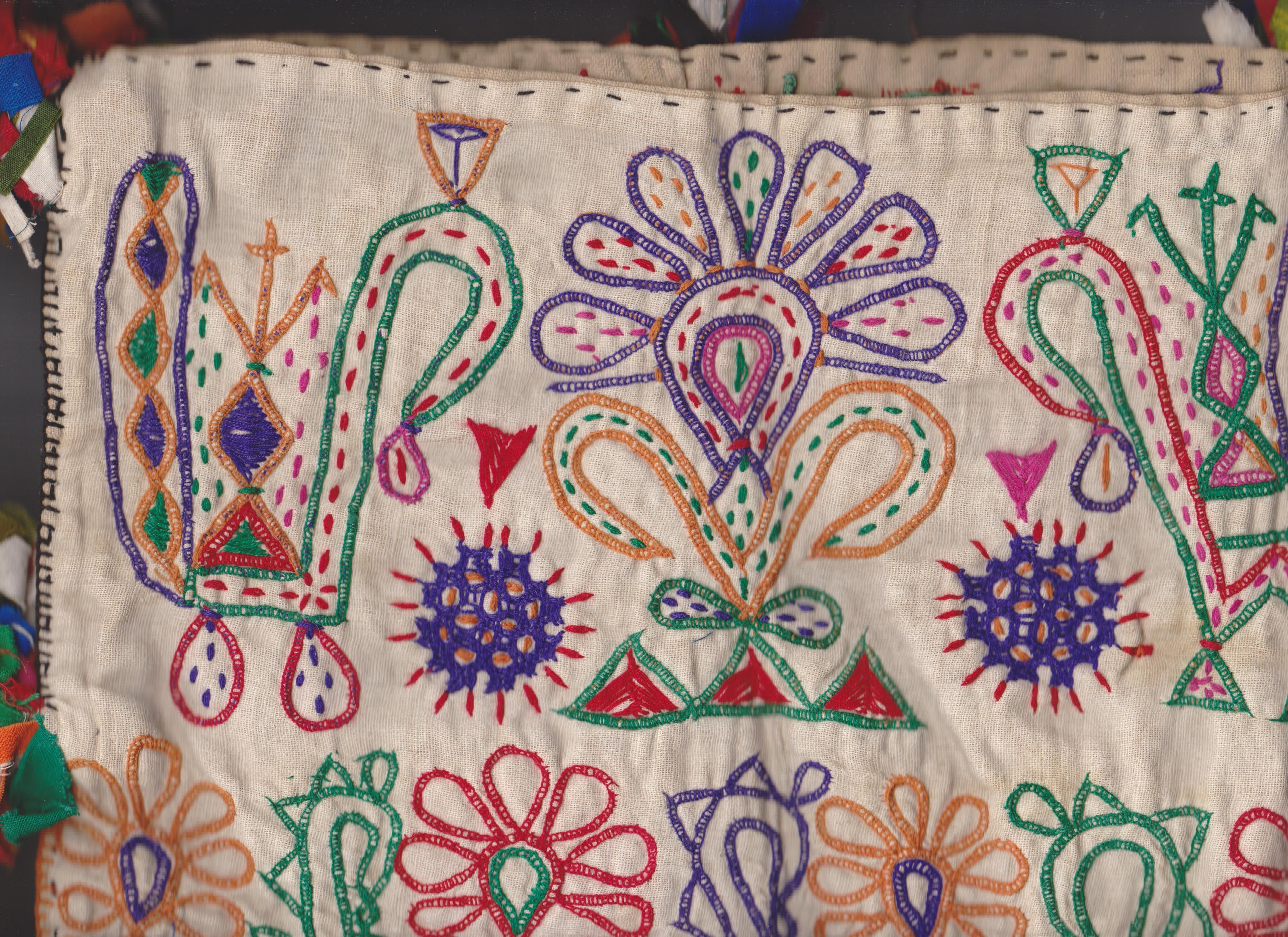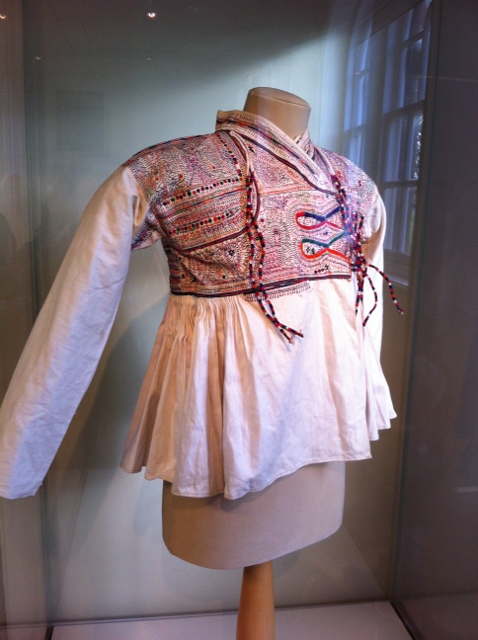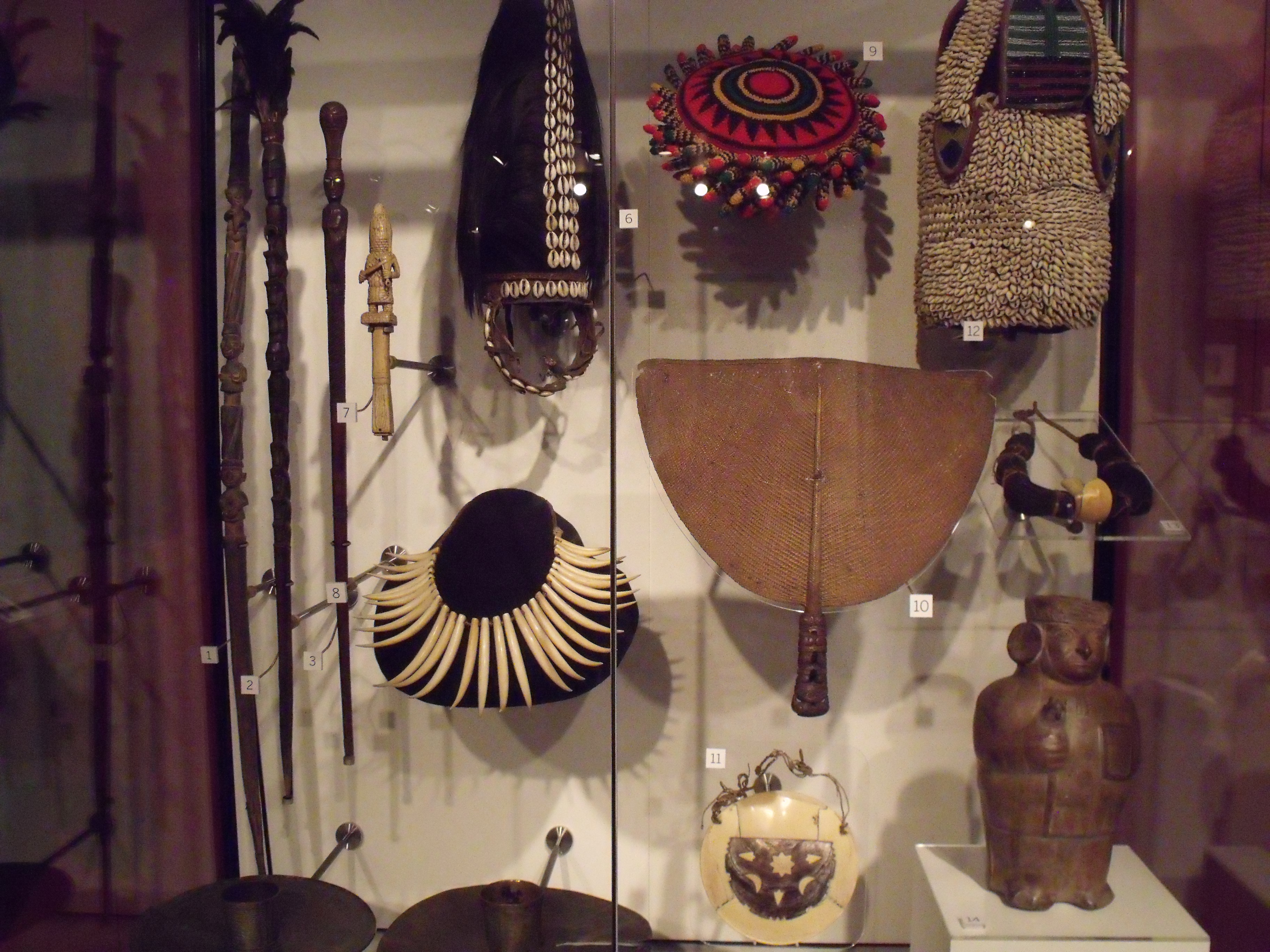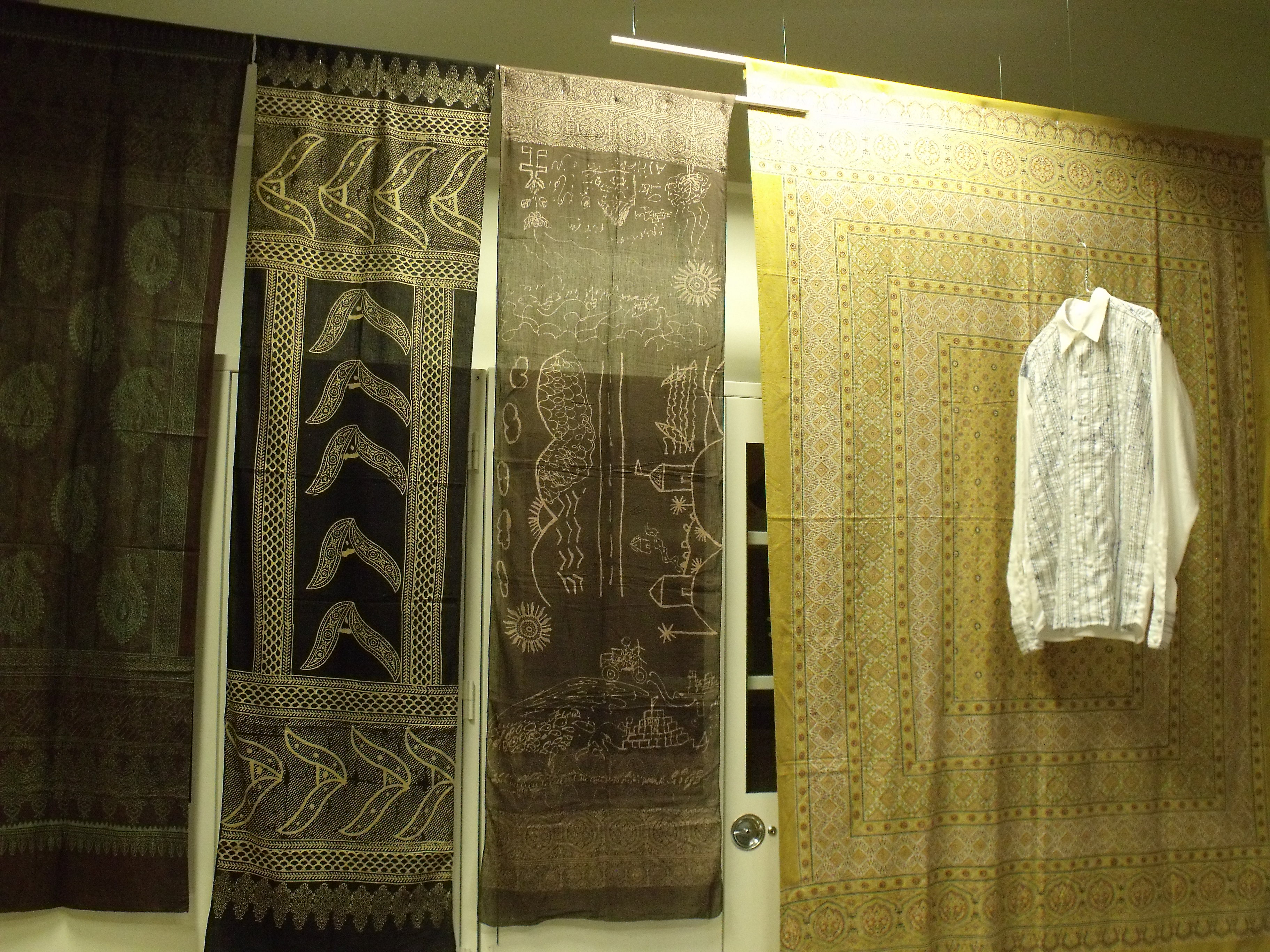On my way back from a recent trip to Scotland, I stopped in Paisley near Glasgow to visit its Museum which features a permanent exhibition on what the town is most famous for – shawl weaving.
The well known Paisley pattern was named after the small town near Glasgow that adopted the tradition of weaving Paisley Pashmina shawls, providing a cheaper version of the shawls being brought from Kashmir by the East India Company and later by soldiers returning from the colony. Manufacturers caught on to the huge popularity in Britain. Paisley was not the first to start weaving these shawls, Norwich was the first to produce the shawls followed by Edinburgh in 1777. Production later spread to France, Vienna and Moscow.
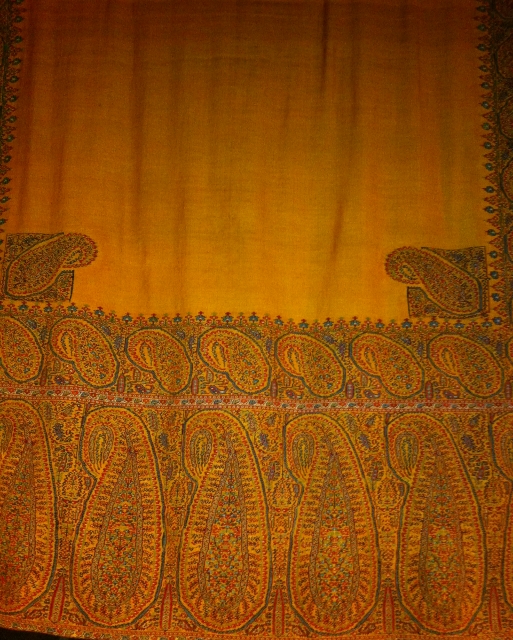
The exact origin of the paisley pattern is unknown, but there have been many explanations. The exhibition information tells us that one of the best explanations is the Mesopotanian ‘Tree of Life’ worshipped by people in what is now Iraq, 3000 years ago. Leaves of the tree, found in carvings on palaces closely resemble the pattern we know today. When in India I was told the pattern derived from the shape that is formed from the impression formed by a clenched fist on a mud surface. These patterns spread along the ancient trade routes that linked Mesopotamia to Asia and Europe, and Kashmir sat at the crossroads of these trade routes, a region famed for its rich textile tradition. The distinctive Kashmir shawl was woven out of pashmina wool, whose main source was the fleece of the Central Asian species of mountain goat, the Capra hircus. (Gillow and Barnard). The wool was also imported from Tibet or Chinese Turkestan. The long slow process of weaving a Kashmir shawl, in the twill-tapestry technique, meant they were very costly and that eventually the production in Kashmir declined, being over taken by mass-produced imitations in both India and Europe.

The motif has been given different names by different cultures, but in many Indian languages the name translates to ‘mango’. I have written in more detail about the Paisley or boteh – local Persian term for the motif, which translates to ‘cluster of leaves’, in my review of the ULITA exhibition in May 2012.


The fashion for Paisley shawls in Britain faded in the late 1860s with the rise in fashion of the bustle, a style that didn’t suit the shawl. However, various forms of the paisley pattern have continued right up until today, in fashion and furnishing prints and weaves, and of course in the pashmina. See Laura Ashley, Vogue and Asos.

